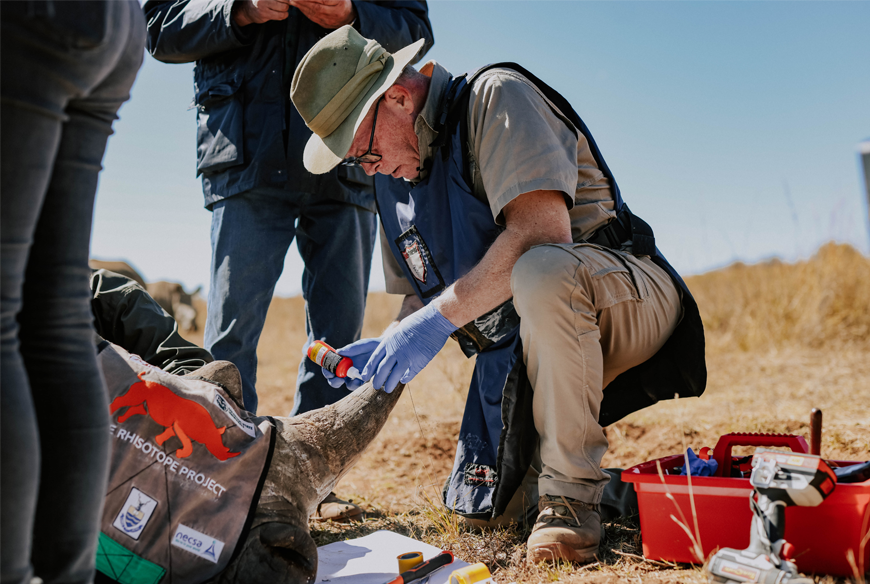A South African-led initiative to curb the illegal rhino horn trade by embedding radioactive isotopes into rhino horns has entered its operational phase, following six years of research and safety testing.
Known as the Rhisotope Project, the effort involves implanting low-level radioisotopes into rhino horns to make them detectable by nuclear security scanners at international border points. Researchers say the method is safe for the animals and effective in tracking illegally trafficked horns.
“We have demonstrated, beyond scientific doubt, that the process is completely safe for the animal and effective in making the horn detectable through international customs nuclear security systems,” says Wits University Professor James Larkin who is also the Chief Scientific Officer of the Rhisotope Project.
Using a technique known as biological dosimetry, researchers cultured blood samples and examined the formation of micronuclei in white blood cells, a proven indicator of cellular damage. No such damage was found in the 20 rhinos during the pilot phase.
“This is just one example of how Wits University’s researchers work and think innovatively, stepping out of the clinical environments of their laboratories to bring bold, creative solutions to some of the world’s toughest challenges, often going above and beyond in their commitment to make a real difference,” says Professor Zeblon Vilakazi, Vice-Chancellor and Principal of Wits University.
Twenty rhinos in the UNESCO Waterberg Biosphere were involved in the pilot. Using biological dosimetry, where blood samples were analysed for cell damage, no adverse effects were detected.
The project is backed by the International Atomic Energy Agency (IAEA), exemplifies how nuclear science can be applied in novel ways to address global challenges.
The Rhisotope Project was launched in response to a decade-long poaching crisis in South Africa, home to the world’s largest rhino population. The country’s white and black rhinos are listed as “Near Threatened” and “Critically Endangered” respectively by the International Union for Conservation of Nature (IUCN).
“This project exemplifies how nuclear science can be applied in novel ways to address global challenges,” says IAEA Director General Rafael Mariano Grossi. “By leveraging existing nuclear security infrastructure, we can help protect one of the world’s most iconic and endangered species.”
To test the system’s detection capability, researchers used 3D-printed rhino horns with identical shielding properties to real keratin (the organic material of which rhino horn is made).
“We simulated transport scenarios with the 3D-printed horns on carry-on luggage, air cargo shipments and priority parcel delivery systems and in each case, even a single horn with significantly lower levels of radioactivity than what will be used in practice successfully triggered alarms in radiation detectors,” explains Larkin.
Detection trials using 3D-printed horns simulating real keratin confirmed the method’s viability across shipping and cargo environments, including full 40-foot containers.
The Rhisotope Project, a registered non-profit, will begin full-scale operations in August 2025. NGOs, rhino owners, and conservation agencies are being encouraged to adopt the technology.
“Our goal is to deploy the Rhisotope technology at scale to help protect one of Africa’s most iconic and threatened species. By doing so, we safeguard not just rhinos but a vital part of our natural heritage,” says Jessica Babich, CEO of the Rhisotope Project.





